Pediatricians reveal 24 things they'd never keep in their homes
Monica Humphries

- Insider spoke to five pediatricians about things they would avoid having in their homes.
- Window blind strings, button batteries, and firearms were some of the largest concerns.
- Some pediatricians said they would never have a baby walker or unmounted television.
Let's face it, babyproofing can feel overwhelming. Every room has dangerous items, including some that may never cross your mind.
Insider spoke with five pediatricians about how they babyproofed their homes when they had children.
They suggested taking it step-by-step and getting at the baby's eye level. They also acknowledged that it's a learning process for everyone - even trained pediatricians.
"Even when you think you've done a really good job childproofing, they're still able to find ways to keep you on your toes," Dr. Krupa Playforth, a pediatrician based in Virginia and mother of two, told Insider.
From long tablecloths to button batteries, here are 24 items to think twice about bringing into your home.
One pediatrician made sure to never have a tension-mounting baby gate at the top or bottom of the staircase.
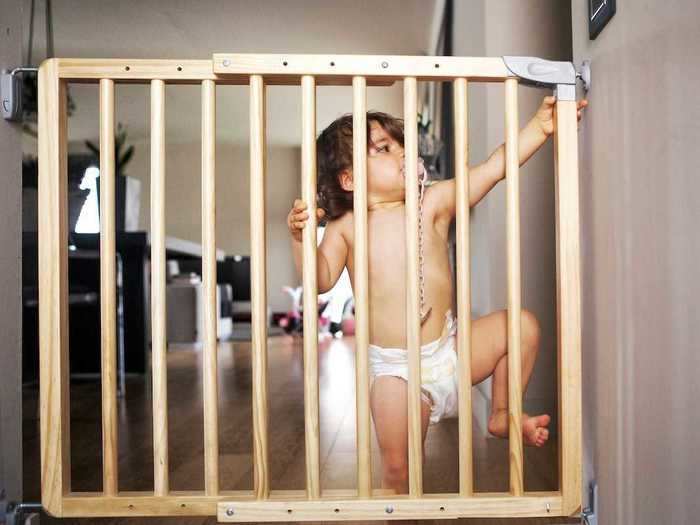
When it comes to childproofing, Dr. Syeda Amna Husain, a pediatrician, lactation consultant, and mother, urged families to start with the biggest obstacles first.
"I tell parents to start with large obstacles or large objects, and then begin to think smaller," she told Insider.
One of the largest — and most dangerous — is the staircase. The American Academy of Pediatrics reported that stairs "are a leading cause of injury for small children." Between 1999 and 2008, more than 900,000 children under the age of 5 were treated for injuries related to stairs.
When it comes to childproofing her home's staircase, Husain opted for baby gates that self-latch and are drilled into the wall.
Husain discouraged the use of tension-mounting gates because they aren't as sturdy or stable.
Another important reminder is to have a gate at both the top and the bottom of the staircase.
"If the child climbs up alone, they risk falling down," she said.
Another pediatrician wants families to have multiple levels of childproofing when it comes to pools and bodies of water.
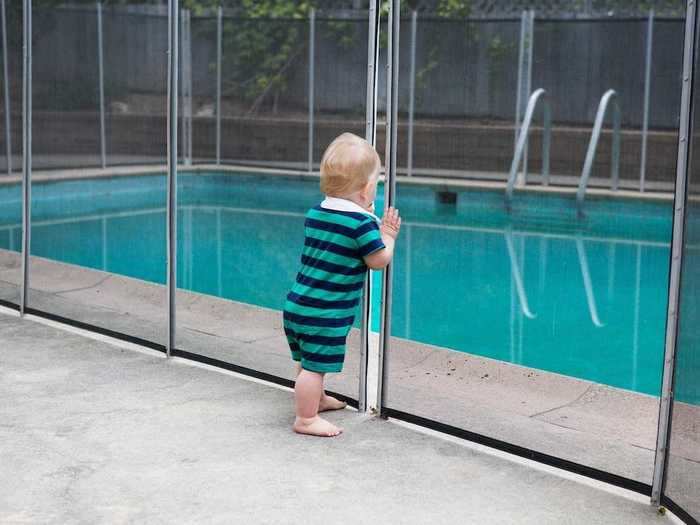
As a pediatrician working in Florida, pool incidents are at the top of Dr. Meghan Martin's worries.
And she has a right to worry, since drowning is the leading cause of unintentional injury-related death for young children, according to Stop Drowning Now.
"The first thing that comes to my mind for safety is pools, drowning, and water safety," Martin, a pediatric emergency medicine physician at Johns Hopkins All Children's Hospital and mom of four, told Insider.
Martin said it's imperative that families with pools have multiple layers of protection. Make sure the pool is gated and that there's an alarm on your home's door and in the pool.
Today, safety manufacturers make pool alarms that go off the second the pool's surface-level changes.
But the most crucial part of pool safety is making sure your child is familiar with water.
"Get your kids comfortable with the water and swimming as early as possible to keep them safe," she said.
The pediatricians Insider spoke to didn't have any unbracketed or unstable large furniture in their homes.
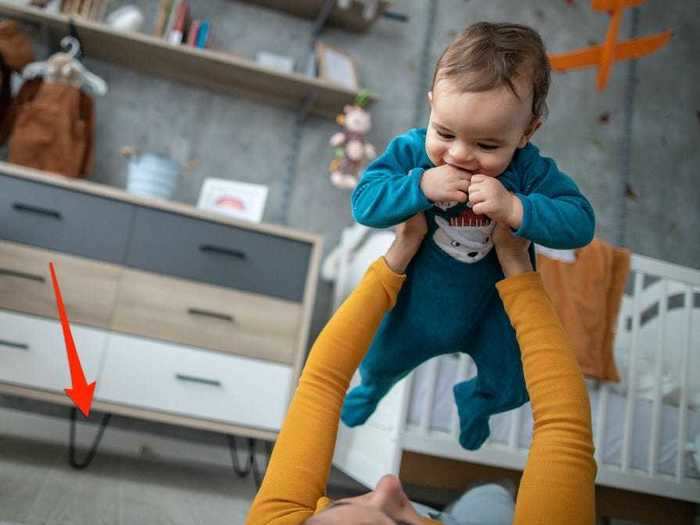
Every pediatrician Insider spoke to made sure heavy furniture was secured to the wall.
"In any room, we have to be concerned about the furniture," Martin said. "Furniture really should be secured to the wall using a bracket, wall strap, anchor — something that's pretty strong. So if the kid does try and climb on it, it's not going to tip over on them."
The US Consumer Product Safety Commission reported nearly 475 children died of tip-over incidents between 2000 and 2019 — a majority involving children under 6.
Simple, affordable brackets or furniture straps can make a huge difference.
Similar to heavy furniture, a few pediatricians made sure to mount their TVs to the wall.
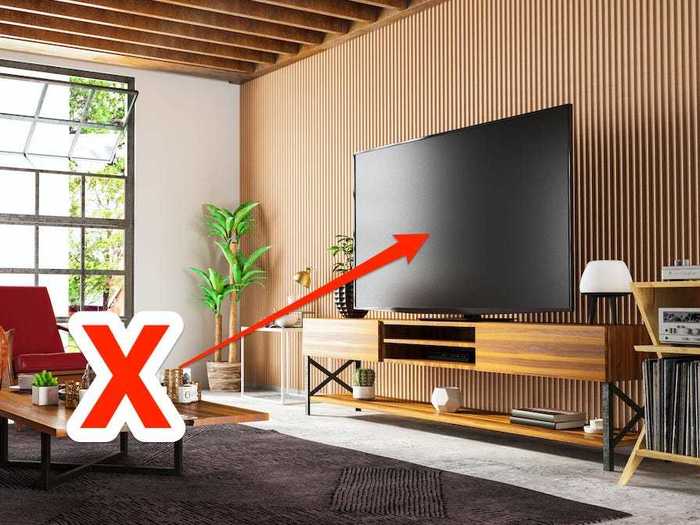
Dr. Denise Nuñez, a pediatrician in a critical care unit in New York and a mother of two, urged families to mount their flat-screen televisions to the wall or make sure they are securely strapped down.
Similar to the worry of furniture topping onto a child, televisions pose the same risk.
Pediatricians say it's important to check that window blinds don't have long cords.
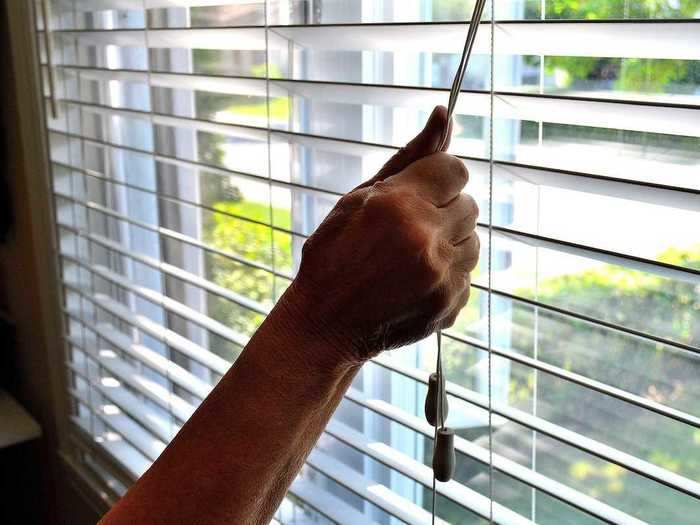
Especially if your home is older, be on the lookout for blinds with long, looped strings, the pediatricians warned.
These dangling strings pose a strangulation risk. Between 1990 and 2015, about two kids a day, or 17,000 children, went to the emergency room for injuries related to corded blinds, according to a study published in the journal Pediatrics.
If your home has these cords, cut the loop and purchase a cord winder or wrapper.
Fortunately, in 2018, a new safety standard was set and blind manufacturers were required to produce window coverings that are either cordless or have inaccessible cords, according to USA Today.
The pediatricians reminded families that windows need to be latched and have baby guards.
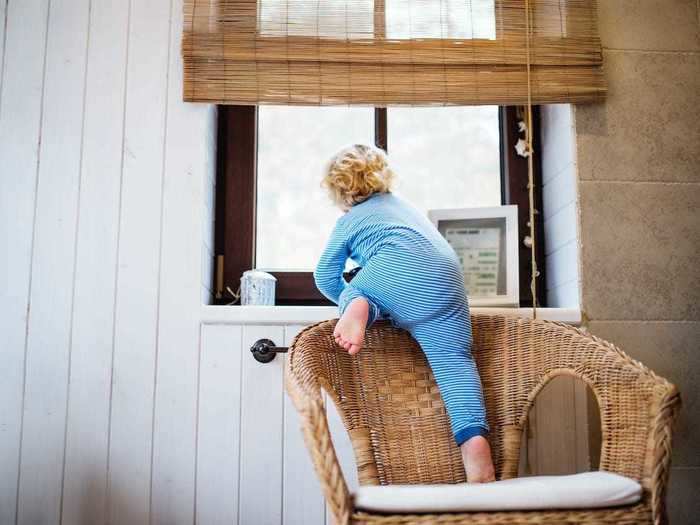
"An unsupervised child can cause all sorts of trouble," Dr. Krupa Playforth, a pediatrician based in Virginia, said. One of the countless concerns is that child accessing a window and potentially falling out, she explained.
Most of the pediatricians Insider spoke with urged families to make sure every window in your home is latched properly and has a window guard, especially on floors above the first.
In the US alone, an estimated 15,000 children injure themselves from window falls each year, according to Cincinnati's Children's, a nonprofit academic medical center.
Martin stressed that window screens are not enough.
"We want to make sure that the windows are secure and that they have latches on them," she said. "A screen is not going to protect the kiddo, so we don't want to leave a baby in the room with an open window."
Playforth added that they've designed window guards with a quick release, which allow families to escape in an emergency, like a house fire.
Be aware of what items have button batteries, and make sure they're far from your child's reach.
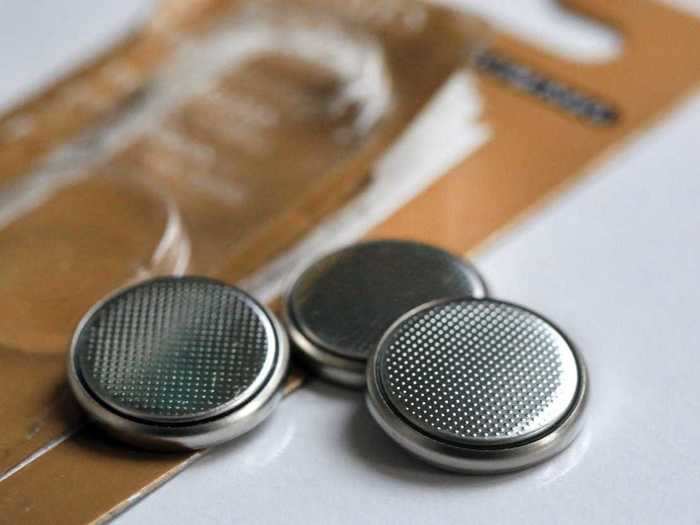
Dr. Nkeiruka Orajiaka, an ER pediatrician and mother of three, stressed the danger of button batteries.
While she knows button batteries are in essential items, like hearing aids, key fobs, calculators, and watches, Orajiaka urged parents to keep them far from their children's reach.
"They're small but dangerous," Orajiaka told Insider. Button batteries have amounts of sodium hydroxide, or lye, in them that can cause burns and infections, according to Healthy Children.
Healthy Children also reported that more than 2,800 children end up in the emergency room each year due to ingesting button batteries.
Orajiaka recommends finding every appliance in your home that uses button batteries and then making sure they're out of the child's reach and stored in high places or locked in cabinets.
Absolutely no crib bumpers, stuffed animals, or blankets in the crib, pediatricians said.
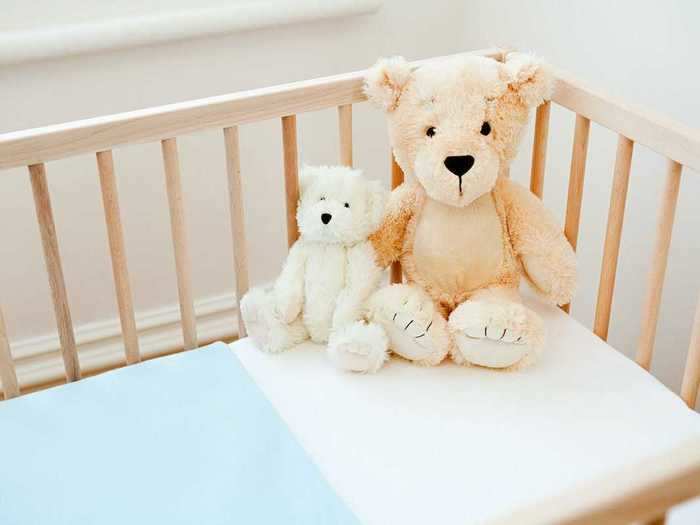
Every pediatrician Insider spoke with stressed the importance of a baby sleeping in an empty crib.
"Safe sleep is just absolutely the most important thing, and it could be the most life-changing thing," Martin said.
A mattress and a fitted sheet are all you need, Nuñez added.
The American Pediatrics Association agrees and states that other items like stuffed animals, blankets, crib bumpers, and pillows, should not be placed in the crib. A 2007 study in the Journal of Pediatrics concluded that crib bumpers are unsafe.
To help a parent remember, Orajiaka suggested remembering the ABC rule: An infant should always sleep "alone, on their back, and in an empty crib."
Anything else poses a suffocation or strangulation danger. Martin said none of these items should be inside a crib until the baby is at least 1 year old, and Nuñez suggested waiting to incorporate stuffed animals into playtime until the child can sit up straight, lift their head, and turn around.
Firearm safety is imperative if you're going to keep a gun in your home.
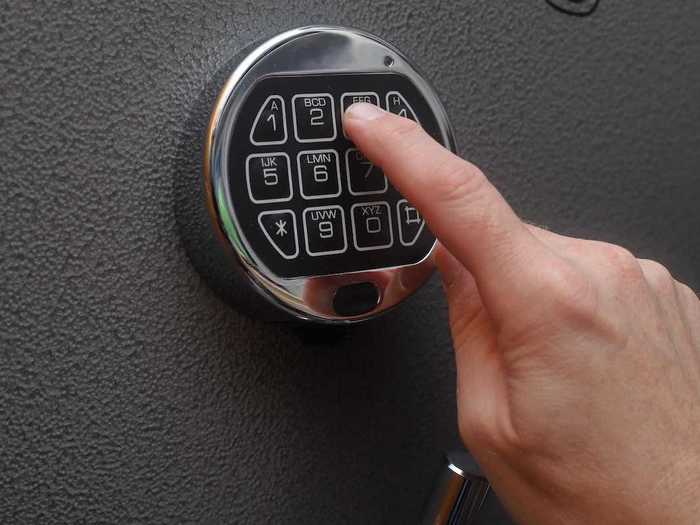
"I don't have firearms in my house and that's just what I am comfortable with, but everyone is different," Orajiaka said.
If you decide to have a firearm, Martin and Orajiaka explained a few safety precautions gun owners must take to keep their children safe.
First, the gun needs to be unloaded and locked. Martin also said to keep the ammunition and the gun in separate, child-resistant lockboxes.
As of 2018, gun injuries are the second leading cause of death in children and teens, and more than 15,000 children died due to firearms between 2014 and 2018, according to the Centers for Disease Control and Prevention.
"We see way too many tragic incidents where kids get ahold of firearms and injure themselves or others," Martin said.
Martin also encouraged families to discuss firearm safety, even if the family doesn't keep firearms.
"Talk about safety with your kids: 'If you do see a firearm, it's really important to let an adult know, not touch it, try to get away from it, and try to get all other kids away from it,'" she said.
Think twice about how easy your child can access the medicine cabinet.
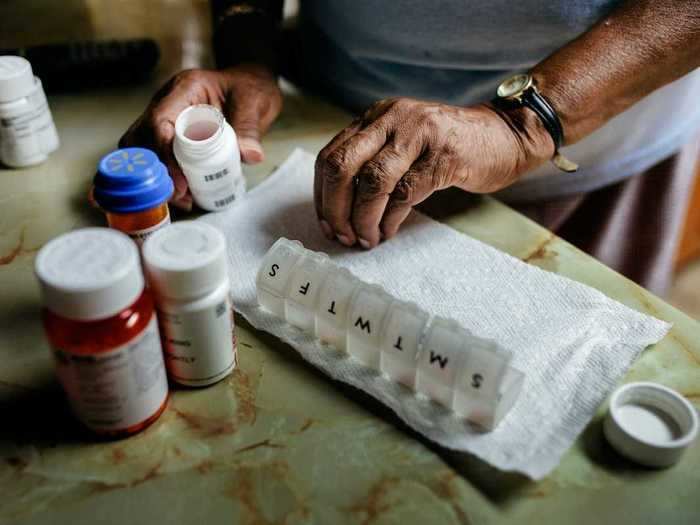
Nuñez said the most common and most serious incidents she sees in her critical care unit involve babies ingesting medication in the home.
Perhaps a grandparent or family member dropped a pill, or a child got ahold of a colorful, loose tablet. Nuñez explained how it can be challenging to assess what's wrong.
"We're always telling our parents to make sure they keep their medication safe," she said.
Playforth agreed, adding that families should have multiple levels of protection when it comes to medication. Keep it up high, out of a child's reach, and keep it locked, she said.
For example, Playforth relocated her family's medicine to a lockbox that's stored in an upper cabinet in the laundry room — completely inaccessible by her children.
On a similar note, Martin said guests' purses and bags go in high places when she has visitors over.
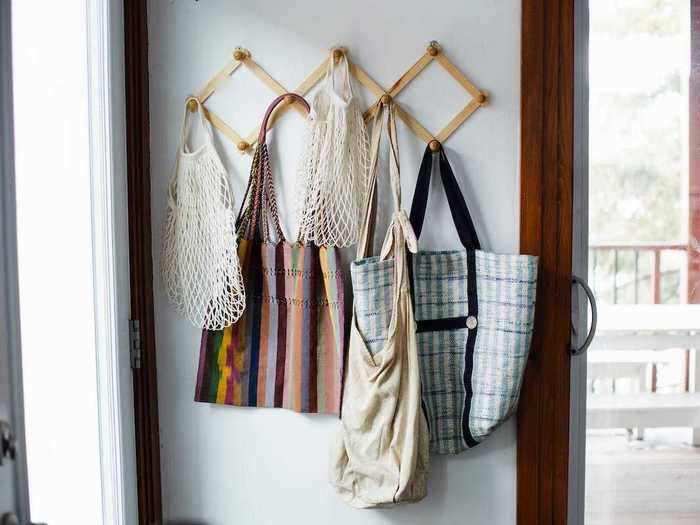
When you welcome friends, family members, and guests into your home, you don't always know what they're bringing with them, Martin explained.
For example, Martin said grandparents may come over with medications, or even firearms, in their purse, and that parents "want to make sure those items are secured, and that those bags and purses are put up in a safe place."
Every pediatrician mentioned keeping your toilet locked.
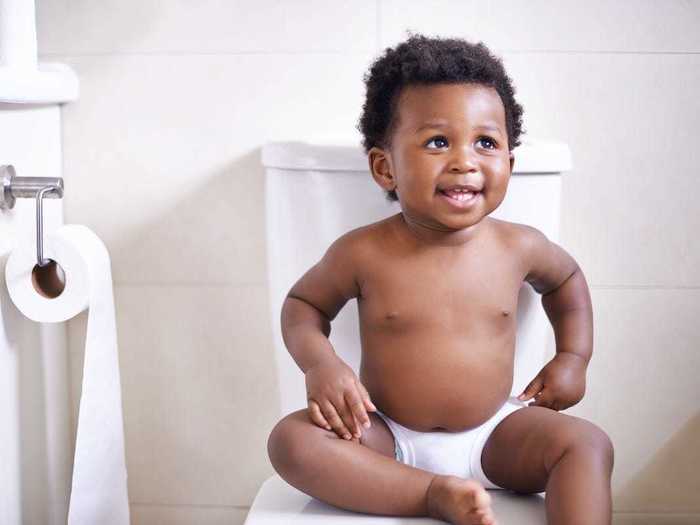
While it might not seem like much water, just a few inches of standing water is a drowning hazard for young children.
So make sure every toilet in the house is equipped with a lock.
"We want to prevent drowning and keep that toilet nice and closed," Martin said. "And obviously protect our cell phones and watches from going down into there, too."
Since there are a handful of dangers in the bathroom, like medications, water, and plastic shower curtains, it might be smart for a family to consider keeping the bathroom door locked with a childproof door handle.
The pediatricians recommend locking cabinets with potentially harmful items like cleaners, heavy pots, spices, and detergents.
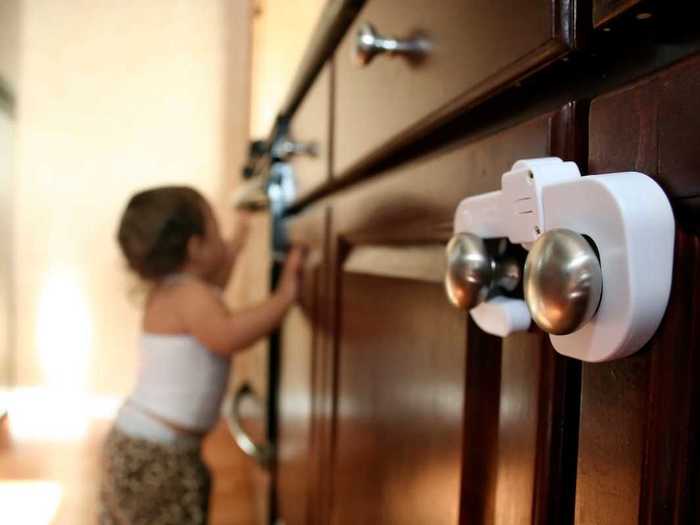
Martin explained that a lot of cleaning solutions and laundry detergents look like candy to a baby.
"Kids think, 'You know, this blue liquid kind of looks like the Gatorade we gave them the other day or the juice they were drinking,'" she said. "So we need to make sure that it's in a safe place."
Make sure all of those items are out of the child's reach and placed in locked cabinets. She also suggested keeping all of those items in their original packaging so that you and your child know that it's not something fun to drink.
Along with cleaning products, Orajiaka also mentioned keeping spices out of a child's reach, as they can be toxic and harmful to children.
The pediatricians also reminded families to keep knives, heavy pots and pans, cords, and alcohol in locked cabinets.
Make sure every outlet is covered so curious toddlers don't get electrocuted.
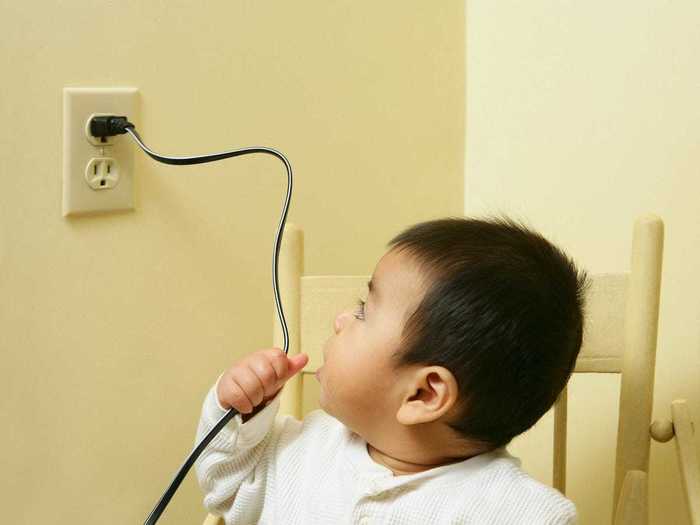
Every pediatrician mentioned using outlet covers.
According to the Electrical Safety Foundation International, about 2,400 children receive treatment in the US for injuries related to electrical outlets.
In a survey by the foundation, nearly one-third of parents didn't cover their outlets. But that's one of the best ways to prevent electrical outlet injuries.
When purchasing outlet covers, look for ones that are tamper-resistant and don't have small pieces, which could be a choking hazard.
Orajiaka also suggested placing heavy furniture in front of the outlet so children can't reach it.
"Using furniture to cover it completely means they don't even have access to it," she said.
One pediatrician mentioned that uncovered radiators can lead to burns.
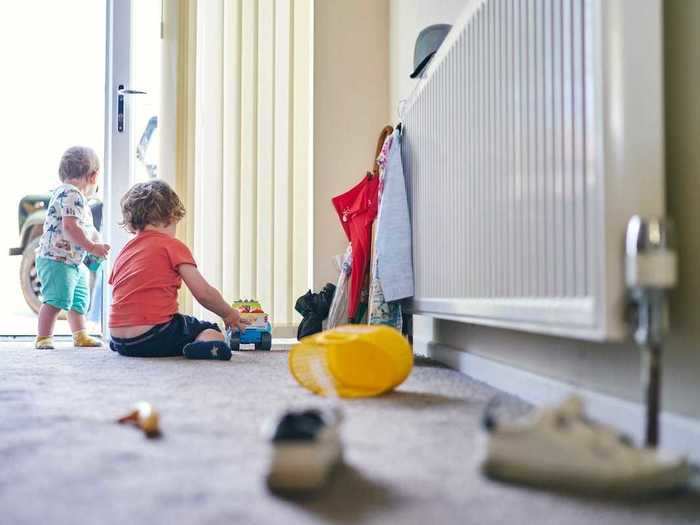
Orajiaka's home in New Jersey relies on radiators for warmth in the winter, which can reach hot temperatures. But an uncovered radiator could put wandering toddlers at risk of burns, so Orajiaka made sure they were all covered while childproofing her home.
The pediatricians stressed being aware of potential choking hazards and using the toilet paper tube method.
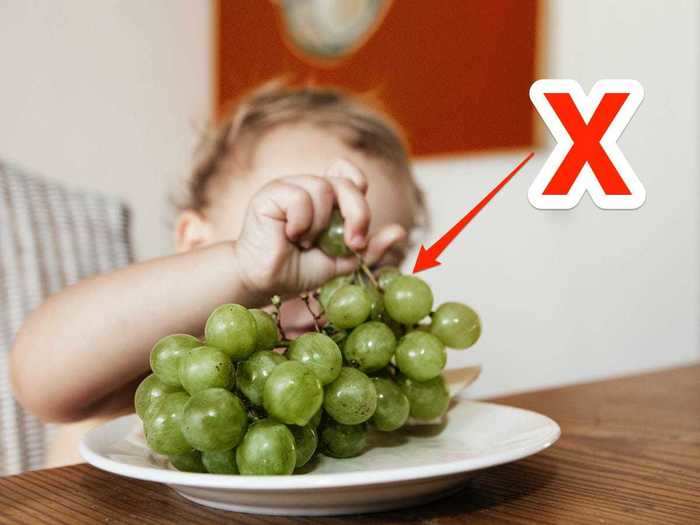
According to Healthy Children, children between the ages of 6 months and 3 years are at the highest risk for choking on food and non-food items.
Every pediatrician Insider spoke to said to be on the lookout for items and toys with small pieces since they are a potential choking risk.
"We did try to always be sure that the toys we brought into our home are not choking hazards," Husain said.
To decide if an item is a choking hazard, Husain and Orajiaka suggested the toilet paper tube test. If it can fit through the toilet paper tube, which is about 1.25 inches, it's a choking hazard.
For toys, you can separate them into which ones you don't want in your home, which ones a child can play with supervised, and which ones are allowed for unsupervised play.
Additionally, popcorn and grapes were the most frequently mentioned food items with a choking risk. Make sure to cut grapes into smaller pieces, and Husain recommends not giving children popcorn until they turn 4 years old.
One pediatrician urged families to ditch the baby walker.
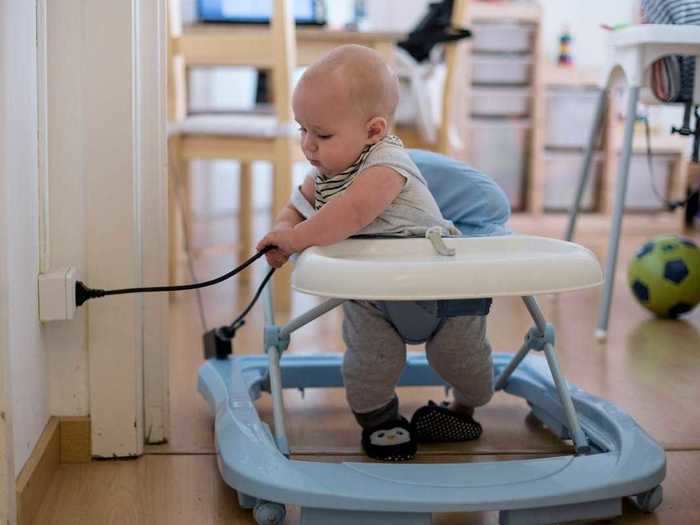
Husain said her children never used a baby walker, and that's because there's a large body of research that shows that they're not safe.
"Even though we've been saying this for years and years, parents are still wanting to bring it into their homes," Husain told Insider.
In a walker, an unsupervised baby can easily walk into dangerous areas of a home, like a staircase, pool, or hot stove. They could also bump into a wall, which could dismount art or furniture.
Baby walkers are so dangerous that the American Academy of Pediatrics called for a ban on the sale and manufacturing of mobile infant walkers.
Healthy Children urges parents to ditch the baby walker and opt for something stationary, like a playpen.
No pediatrician left their fireplace ungated.
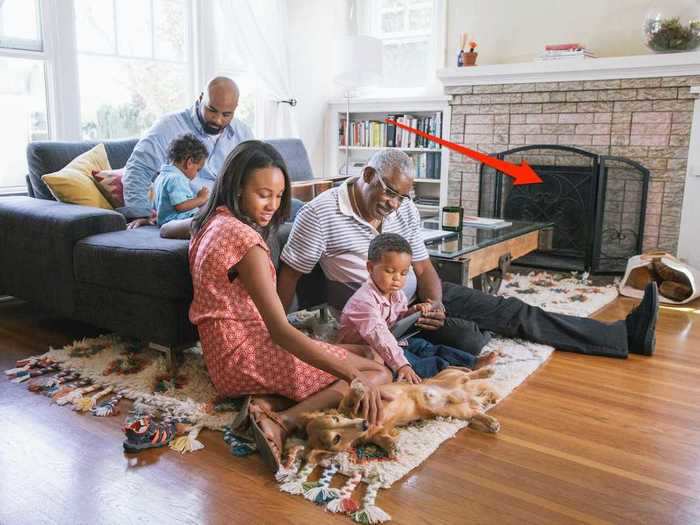
Add a safety gate to your fireplace to prevent a child from burning themselves when the fire is going.
The gate will also be helpful when the fire isn't blazing. Orajiaka described her daughter immediately exploring the fireplace and its leftover ashes when her family moved into a new home.
"Even though we were not using it, we had to close it off," Orajiaka said.
Other pediatricians suggested making sure the heavy, pointed tools are out of a child's reach and a fire extinguisher is nearby.
No sharp corners are in these pediatricians' homes.

Husain said a toddler's changing height can make them susceptible to head injuries from the sharp corners of furniture, like counters, tables, or dressers.
Husain said she's seen countless of these head injuries as a pediatrician, and Harvard Health Publishing reports that tens of thousands of children end up in the emergency room each year due to head injuries.
One way to help prevent head injuries in the home is to make sure all the sharp corners are covered and protected.
The pediatricians Insider spoke to avoided heavy artwork and mirrors in active areas throughout their homes.
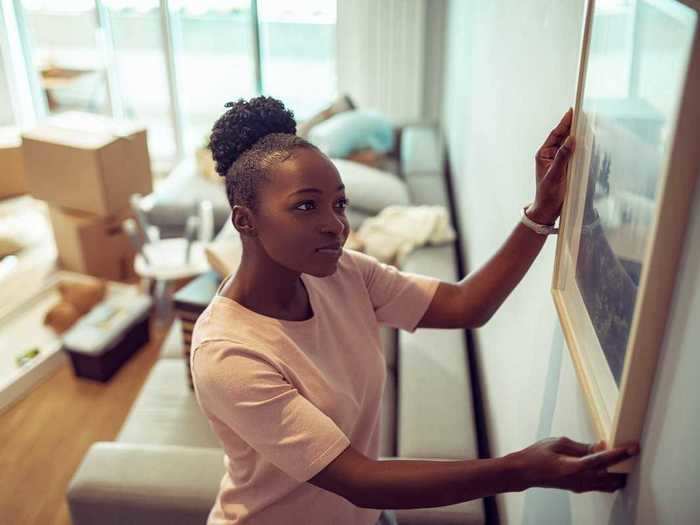
Heavy wall art, whether it's mirrors, paintings, or other artwork, poses a risk of falling off the wall and onto your child. If the decor is encased in glass or has sharp corners, this could cause serious injuries.
Husain and Orajiaka suggested avoided heavy artwork in places that your child could bump into or reach and pull down.
If you do decide to have some artwork, opt for things that are light. Hang the artwork securely and place the decor farthest from where your child plays.
Similar to artwork, be wary of large lamps and other items that could easily be pulled off furniture.
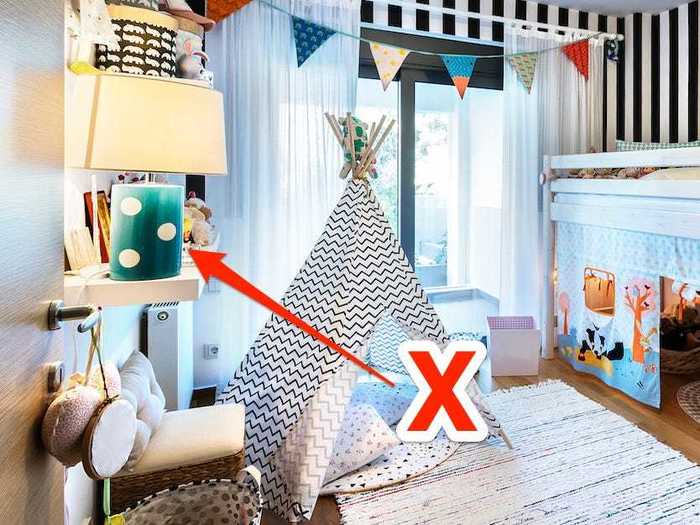
Playforth said large lamps can easily be pulled off of a dresser or table.
"This could apply to multiple different rooms, but big lamps are harder to secure," Playforth said. "You want to make sure that your child doesn't pull the lamp onto themselves."
If it's heavy enough, the lamp could cause serious injuries to your child.
If you can't avoid a lamp, make sure its cord is secure and consider using something like a cord cover.
Research every plant before you bring it into your home.
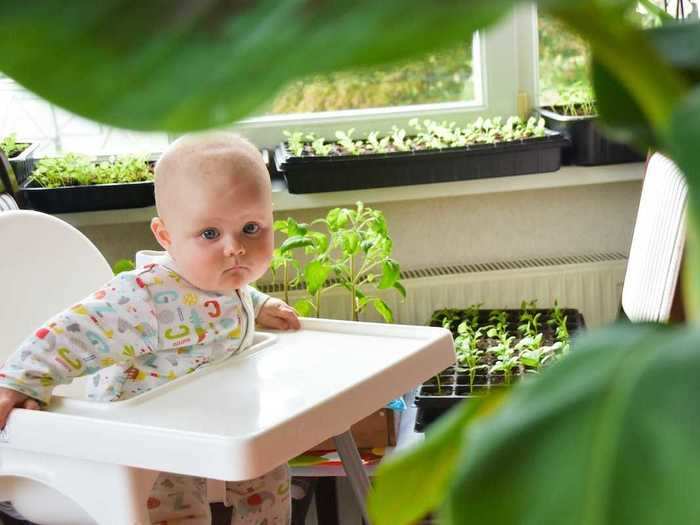
Just like houseplants can be toxic for pets, they are often also toxic to babies and children.
Double-check that each plant you bring into your home is safe, especially if it's going to be within your child's reach. Otherwise, opt for something else.
"Nobody really thinks about poisonous houseplants," Playforth said, adding that it's important to have poison control's phone number handy. Either memorize it, save it in your phone, or post it on a communal bulletin board.
Some pediatricians said they avoided long tablecloths on their tables.
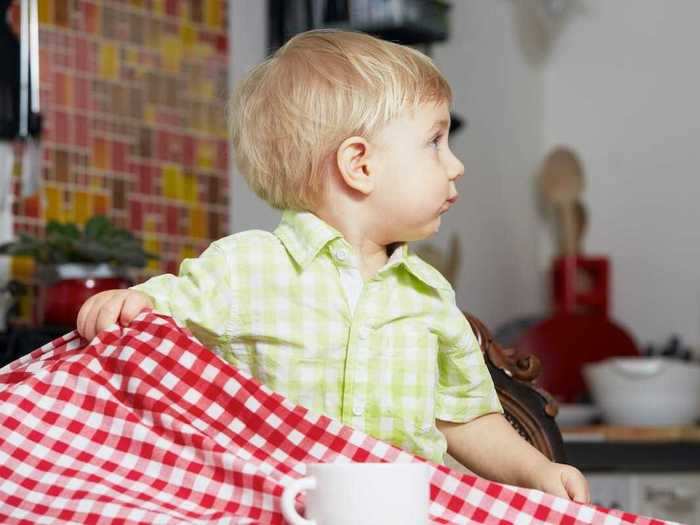
A tablecloth is a perfect thing for a child to grab onto and pull down, according to Playforth. And if there are any heavy objects or hot liquids, like coffee or tea, it could cause harm.
A toy chest is a no-go since it can crush tiny fingers and potentially entrap young children.
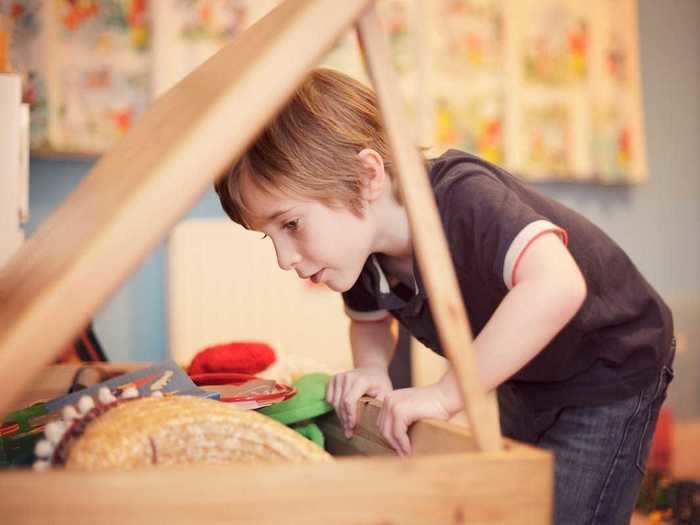
You won't find a toy chest in the homes of Orajiaka or Playforth for a handful of reasons.
A toy chest could potentially close on the child, smashing their fingers or other body parts. Even worse, a child could climb into the chest and accidentally get trapped and suffocate.
The US Consumer Product Safety Commission also stressed the potential dangers of these bins, citing 34 deaths between 1996 and 2014 directly due to toy chests.
Instead, opt for a toy bin that doesn't have a lid.
In addition to these recommendations, the pediatricians Insider spoke to also suggested saving poison control's phone number, taking a CPR class, and reading up on first-aid tips.
With all these tips in mind, the pediatricians reminded families to cherish their time with their babies and celebrate their growth.
READ MORE ARTICLES ON
Popular Right Now
Popular Keywords
Advertisement